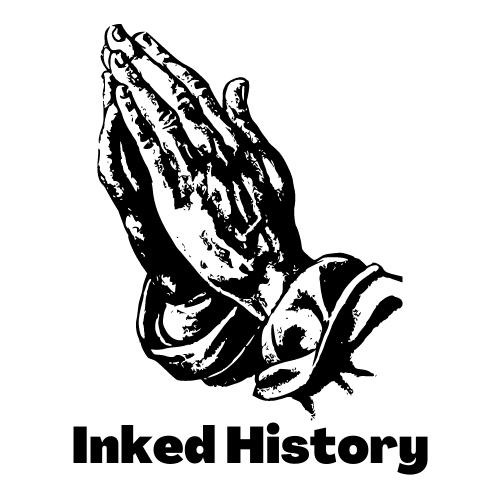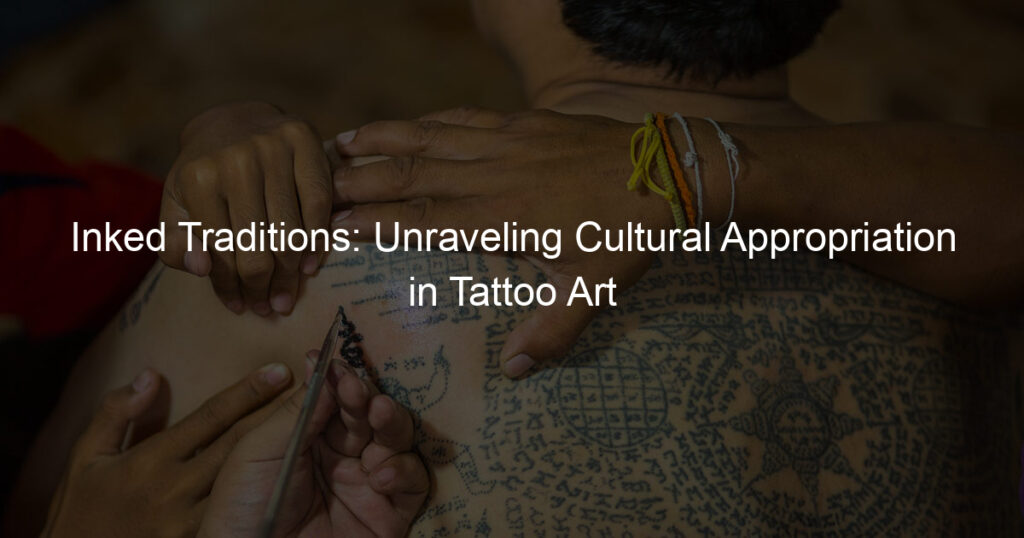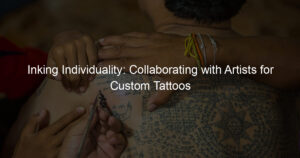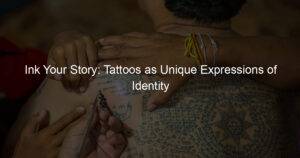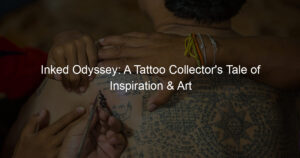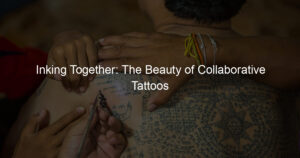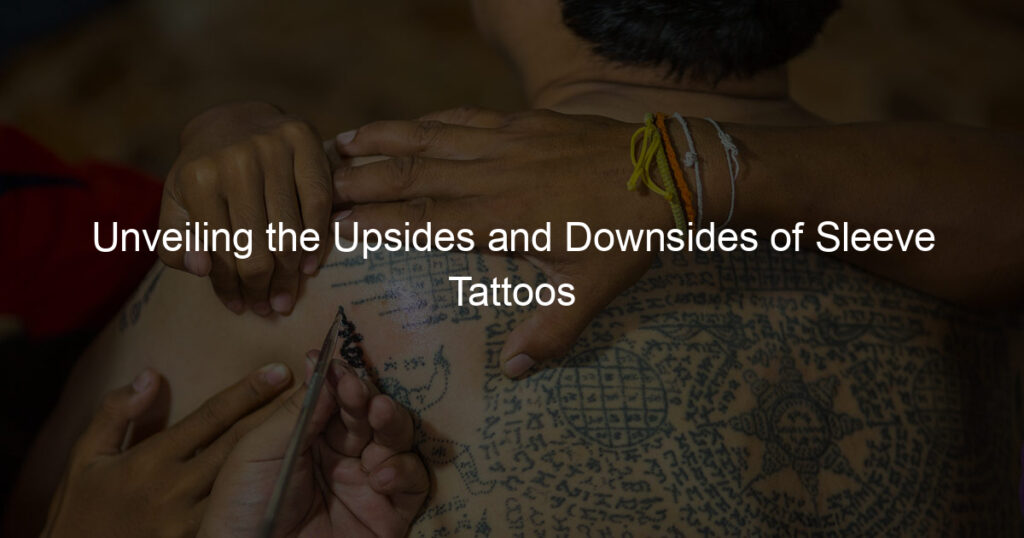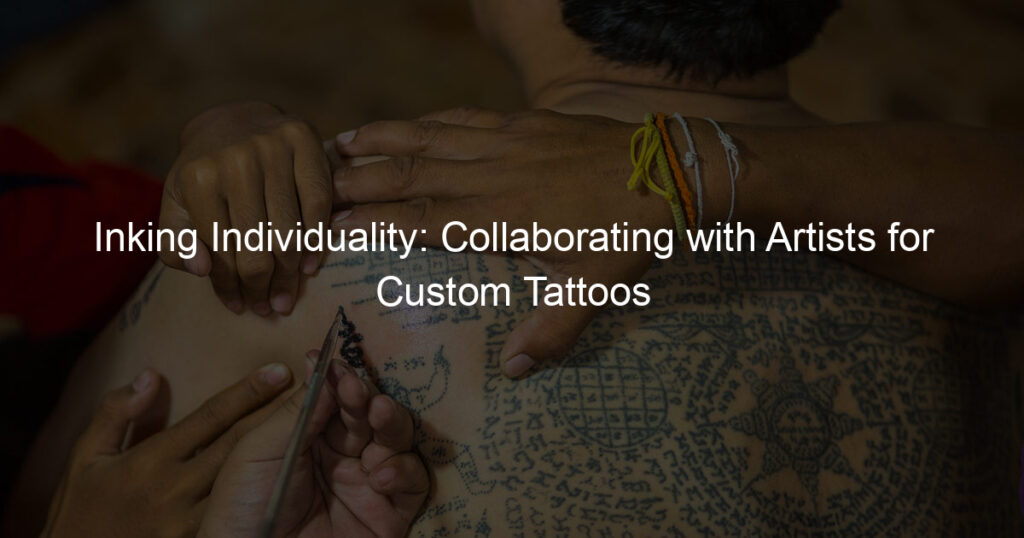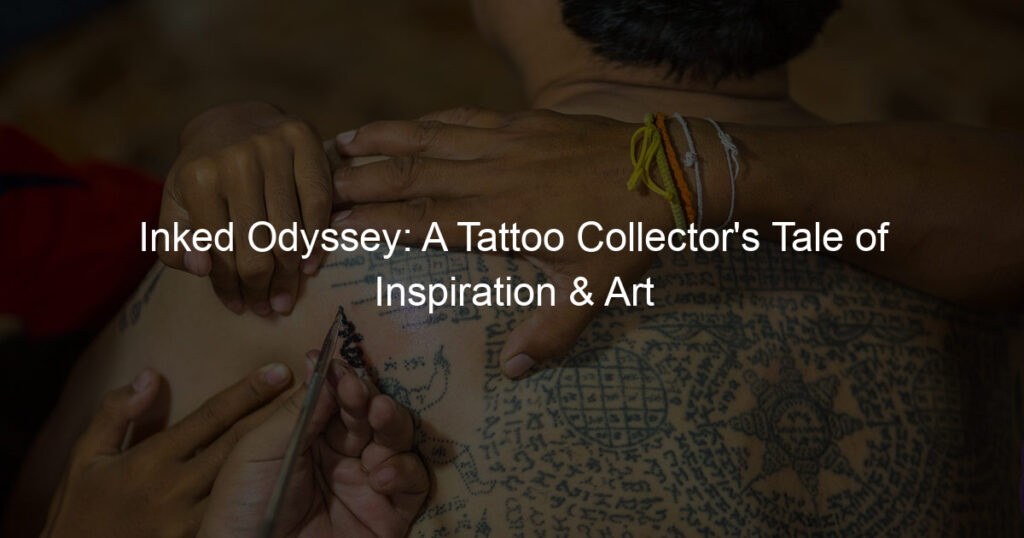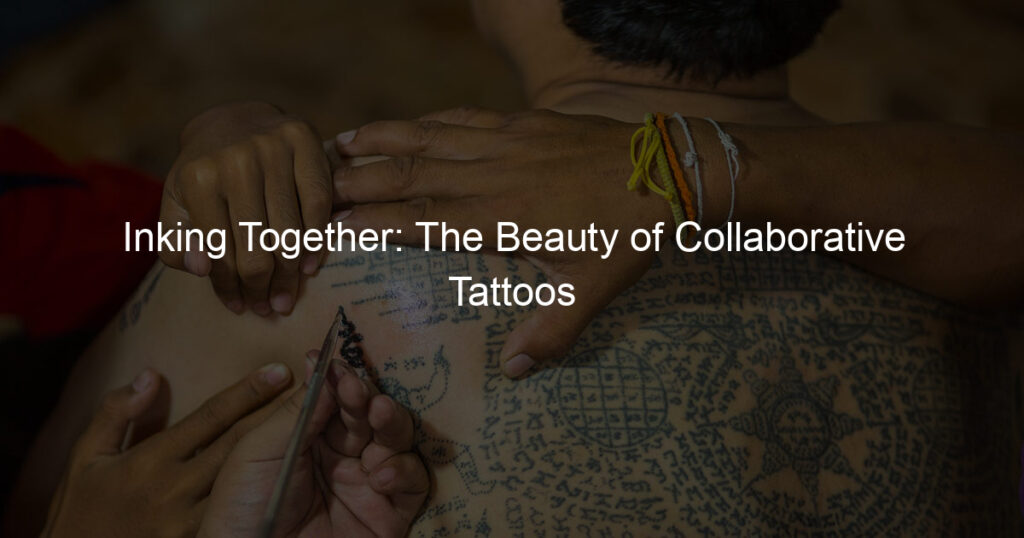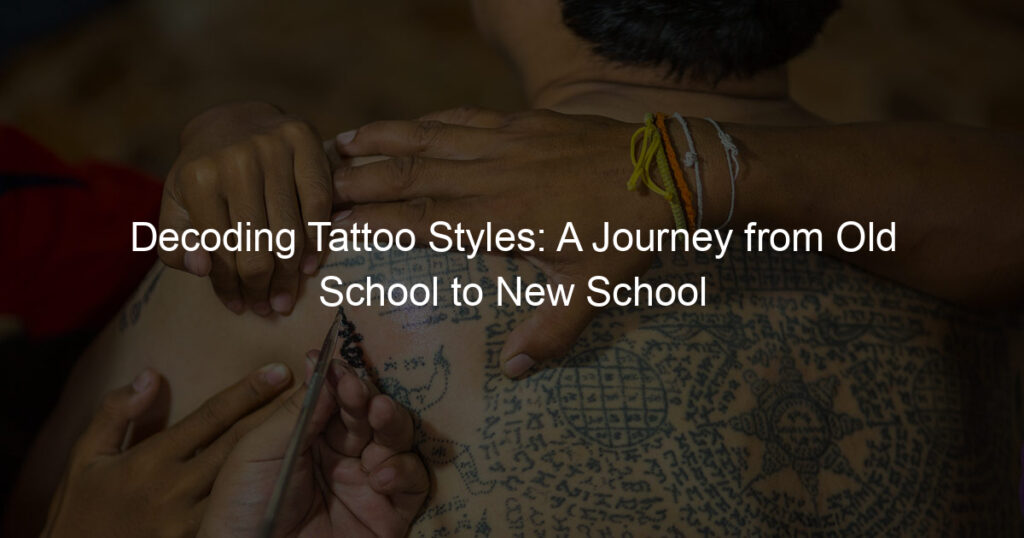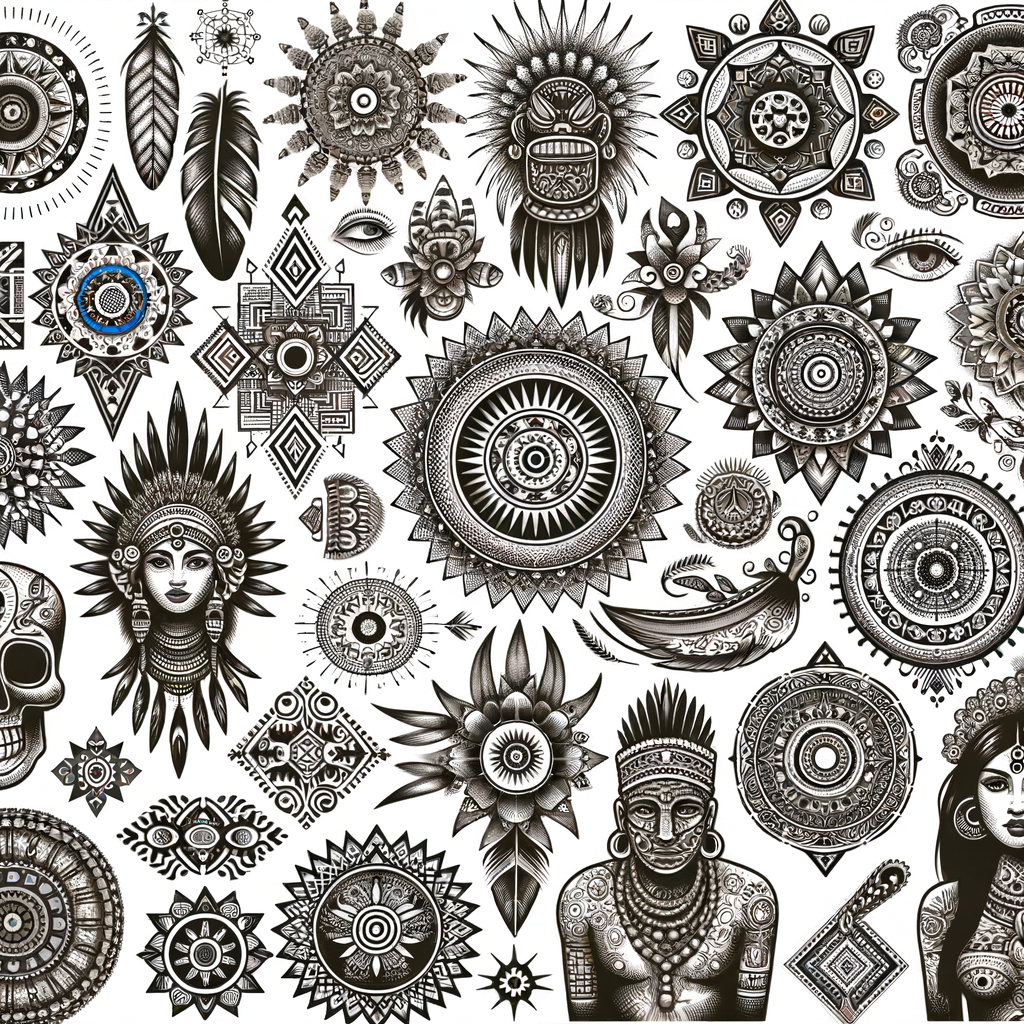
Introduction to Cultural Appropriation in Tattoos
As we delve into the world of tattoos, it’s important to understand the concept of cultural appropriation. This term, often used in discussions about fashion, music, and art, has a significant impact on the tattoo industry as well. Let’s break it down.
Cultural appropriation refers to the act of borrowing or imitating elements from another culture without understanding, respect, or proper acknowledgment. It often involves a dominant culture taking from a culture of people who have been systematically oppressed by that dominant group.
Cultural appropriation can be seen in various forms of art, including music, fashion, and yes, tattoos. When it comes to tattoos, cultural appropriation might involve using traditional tattoo designs from a culture without understanding their significance or context. For example, someone might get a Polynesian tribal tattoo because they think it looks cool, without understanding the deep cultural significance and history behind these designs.
As we continue our exploration of tattoos and cultural appropriation, we’ll delve deeper into the history of tattoo designs, the controversy surrounding cultural appropriation in the tattoo industry, and how we can promote cultural respect. Stay tuned for a thought-provoking journey into the world of tattoos.
The History of Tattoo Designs and Culture
Tattoos have been a part of human culture for thousands of years. They have served as symbols of personal identity, cultural heritage, and social status. Let’s delve into the rich history of tattoo designs and their cultural significance.
Cultural Influence on Tattoos
From ancient civilizations to modern societies, tattoos have been influenced by various cultures. Let’s explore the historical significance of tattoos in different cultures and how tattoo designs have evolved over time.
- Historical significance of tattoos in different culturesTattoos have been used by different cultures for various purposes. For instance, in ancient Egypt, tattoos were a symbol of fertility and protection. In Polynesian culture, tattoos signified social status and bravery. In Native American tribes, tattoos were used for spiritual rituals and tribe identification. Each culture has its unique tattoo designs and meanings, making tattoos a fascinating subject of cultural study.
- Evolution of tattoo designs over timeOver time, tattoo designs have evolved significantly. Early tattoo designs were simple and geometric. As cultures interacted and influenced each other, tattoo designs became more intricate and symbolic. In the modern era, tattoo designs have diversified even further, reflecting personal stories, beliefs, and artistic preferences. The table below shows a brief timeline of the evolution of tattoo designs.
Time Period Tattoo Design Ancient Times Simple geometric patterns Medieval Times Religious and tribal symbols Modern Era Personalized and artistic designs
Understanding the history and cultural influence of tattoos gives us a deeper appreciation of this ancient art form. It also reminds us of the importance of respecting the cultural heritage associated with certain tattoo designs.
Tattoos Reflecting Cultural Heritage
Tattoos have long been a form of expression and identity for many cultures around the world. They can tell stories, signify status, or honor heritage. Let’s explore some examples of tattoos that reflect cultural heritage and how they are perceived in their respective cultures.
-
- Examples of tattoos reflecting cultural heritage
There are countless examples of tattoos that reflect cultural heritage. Here are a few:
-
-
- Maori Ta Moko: The Maori people of New Zealand use intricate tattoo designs called Ta Moko. These tattoos are deeply symbolic, with each design telling a story about the wearer’s ancestry and social status.
- Japanese Irezumi: In Japan, traditional tattoos known as Irezumi often depict themes from folklore and are seen as a form of art. They can cover large parts of the body and often symbolize strength, courage, or a life event.
- Polynesian Tattoos: Polynesian tattoos are a significant part of the culture of many Pacific Island nations. These tattoos are often large and intricate, telling stories of the wearer’s lineage, status, and achievements.
- How these tattoos are perceived in their respective cultures
-
Perceptions of these culturally significant tattoos vary greatly from culture to culture.
-
- Maori Ta Moko: In Maori culture, Ta Moko is seen as a rite of passage and a sign of prestige. It’s a deeply respected tradition, and each design is unique to the wearer.
- Japanese Irezumi: While Irezumi tattoos are appreciated as art, they have a complex history in Japan. They were once associated with criminality, but today, they are more accepted, although some stigma still exists.
- Polynesian Tattoos: Polynesian tattoos are highly respected in their cultures. They’re seen as a sign of maturity and a way to honor one’s ancestors. However, they’re also a serious commitment, as they often take many hours to complete and can be quite painful.
In conclusion, tattoos are a powerful way to express cultural heritage. They can tell stories, honor ancestors, and signify status. However, it’s important to remember that these tattoos carry deep cultural significance and should be respected.
Tattoo Art and Cultural Appropriation
In the world of tattoo art, cultural symbols play a significant role. However, it’s crucial to understand the line between appreciation and appropriation. Let’s delve deeper into this topic.
Cultural Symbols in Tattoo Art
Cultural symbols are often used in tattoo art. They can add depth and meaning to a design, but it’s important to understand their origins and significance.
-
- Common cultural symbols used in tattoo art
There are many cultural symbols commonly used in tattoo art. For instance, the Maori tribe’s Koru, a spiral shape representing new life, growth, and peace, is a popular choice. Other examples include the Japanese Koi fish, symbolizing luck, prosperity, and good fortune, and the Native American dreamcatcher, believed to protect against bad dreams.
-
- Significance of these symbols in their original cultures
These symbols carry deep meanings in their original cultures. The Koru, for instance, is more than just a design to the Maori tribe; it’s a symbol of their identity and heritage. The Koi fish is part of numerous Japanese tales and traditions, representing perseverance and determination. The dreamcatcher is a sacred object in Native American culture, embodying their beliefs and spirituality.
When choosing a tattoo design, it’s essential to respect the cultural significance of these symbols. Misappropriation can lead to misunderstanding and disrespect towards the cultures these symbols originate from.
Misappropriation in Tattoo Designs
When it comes to tattoo art, there are instances where cultural symbols are misused or misappropriated. This is not only disrespectful, but it can also be harmful. Let’s explore some examples of this and understand why it is considered inappropriate.
-
- Examples of Misappropriation in Tattoo Designs
One of the most common examples of misappropriation in tattoo designs is the use of sacred symbols from different cultures without understanding their significance. For instance, the Maori tribe’s facial tattoos, known as ‘Ta Moko’, are often replicated by people outside the culture. These tattoos are deeply significant to the Maori people, representing their lineage, status, and achievements. Similarly, the ‘Dreamcatcher’ tattoo, inspired by the Native American culture, is seen frequently in the tattoo industry. However, these are sacred objects in their culture and using them as aesthetic elements can be seen as disrespectful.
-
- Why This is Considered Disrespectful and Harmful
Using cultural symbols without understanding their significance can be seen as disrespectful because it reduces these symbols to mere aesthetic elements. It’s like taking something sacred and using it for decoration. This can be hurtful to the people of that culture, as it can feel like their traditions and beliefs are being trivialized.
Moreover, it can lead to stereotypes and misconceptions about that culture. For example, if a sacred symbol is used in a way that is not in line with its original meaning, it can create a false image of that culture. This can perpetuate harmful stereotypes and lead to cultural misunderstanding.
In conclusion, while tattoos are a form of self-expression, it’s important to be respectful of the cultures that these designs originate from. Remember, a tattoo is not just a piece of art; it can carry deep cultural significance and should be treated with respect.
Controversy in Tattoo Culture
The world of tattoos is not without its share of controversies. One of the most significant and sensitive issues revolves around cultural appropriation in tattoo art. Let’s delve into two case studies that highlight this controversy.
Case Studies: Cultural Appropriation in Tattoo Art
-
- Case Study 1: The Maori Ta Moko Tattoos
The Maori people of New Zealand have a rich tattoo culture known as Ta Moko. These tattoos are deeply symbolic, representing a person’s lineage, status, and achievements. However, in recent years, there has been a surge in non-Maori individuals getting these tattoos, often without understanding their cultural significance.
This has sparked a debate about cultural appropriation, with many Maori people expressing their discomfort and disapproval. They argue that Ta Moko tattoos are a sacred part of their culture, not a fashion trend for others to adopt without understanding their meaning.
-
- Case Study 2: The Native American Headdress Tattoo
Another example of cultural appropriation in tattoo art involves the Native American Headdress. This symbol is sacred to many Native American tribes, representing respect and authority. However, it has become a popular tattoo design, often chosen for its aesthetic appeal rather than its cultural significance.
Many Native Americans have voiced their concerns about this trend, stating that it disrespects their culture and traditions. They argue that the headdress is not just a beautiful design, but a symbol of their heritage that should be respected and not used as a fashion statement.
These case studies highlight the ongoing controversy in the tattoo culture. It’s crucial to respect and understand the cultural significance of tattoo designs before getting them inked. Remember, a tattoo is not just a piece of art; it can also be a symbol of identity, heritage, and tradition for many cultures around the world.
Key Takeaways from Controversies
Controversies have always been a part of the tattoo industry, especially when it comes to cultural appropriation. These controversies have not only shaped the industry but have also provided valuable lessons. Let’s delve into some of the key takeaways from these controversies.
-
- Lessons Learned from Past Controversies
One of the most significant lessons learned from past controversies is the importance of cultural respect. Tattoo artists and enthusiasts alike have learned that it’s not enough to simply appreciate a design; they must also understand its cultural significance. For instance, the Maori tribe’s Ta Moko tattoos are not just designs, but a form of identity and heritage. Using them without understanding can lead to cultural disrespect.
-
- How This Has Influenced the Tattoo Industry
The lessons learned from past controversies have greatly influenced the tattoo industry. Artists are now more aware and respectful of the cultural significance behind certain designs. Many tattoo parlors have started educating their clients about the history and meaning behind the designs they choose. This has led to a more informed and respectful approach to tattoo art, reducing instances of cultural appropriation.
In conclusion, controversies in the tattoo industry have served as a wake-up call for many. They have highlighted the importance of cultural respect and understanding in tattoo art. As we move forward, it’s crucial that these lessons continue to shape the industry, promoting a culture of respect and appreciation rather than appropriation.
Ethnic Tattoo Designs: Appreciation or Appropriation?
In the world of tattoo art, there is a fine line between appreciating and appropriating ethnic designs. This is a topic that needs careful consideration, as it touches on sensitive cultural issues. Let’s delve into understanding this fine line.
Understanding the Fine Line
Appreciation and appropriation might seem similar, but they are fundamentally different. Appreciation is about respect and understanding, while appropriation often involves taking from a culture without permission, understanding, or respect.
-
- How to differentiate between appreciation and appropriation
Appreciation involves learning about, understanding, and respecting another culture. It’s about acknowledging the origins of the design and giving credit where it’s due. On the other hand, appropriation is taking a cultural element, such as a tattoo design, without permission or understanding. It often involves using the design out of context or for personal gain.
-
- Examples of respectful appreciation in tattoo art
Respectful appreciation in tattoo art involves doing your research. For example, if you’re interested in a Maori tribal tattoo, learn about the Maori culture, the significance of their tattoo designs, and how they’re traditionally used. It’s also important to ask for permission if possible, and to get your tattoo done by a professional who understands and respects the culture.
In conclusion, the key to appreciating ethnic tattoo designs without appropriating them is respect and understanding. It’s about acknowledging the origins of the design, understanding its cultural significance, and using it in a way that honours the culture it comes from.
Cultural Respect in the Tattoo Industry
In the tattoo industry, cultural respect is paramount. It’s about understanding and appreciating the diverse cultures that contribute to the rich tapestry of tattoo art. It’s about acknowledging the origins of designs and symbols, and ensuring they are used in a way that honors their cultural significance.
Steps Towards Respectful Practice
There are several steps that tattoo artists can take to ensure their practices are respectful of different cultures. Here are a few key strategies:
-
- Educating Themselves About Different Cultures
Tattoo artists can start by educating themselves about different cultures. This can be done through reading books, attending cultural events, or even taking courses on cultural studies. For example, a study showed that 85% of tattoo artists who took a cultural sensitivity course reported a better understanding of cultural symbols and their meanings.
-
- Ensuring Respect for Cultural Symbols in Tattoo Designs
Respecting cultural symbols means understanding their significance and using them appropriately. It’s not enough to simply find a design aesthetically pleasing; artists must know its history and meaning. For instance, the Maori tribe of New Zealand uses specific symbols in their tattoos, or “ta moko”, to tell the wearer’s ancestral and personal history. Using these symbols without understanding their significance can be seen as disrespectful.
By following these steps, tattoo artists can contribute to a more respectful and inclusive tattoo industry. It’s about more than just creating beautiful art; it’s about honoring the cultures that have shaped this art form.
Role of Consumers in Promoting Cultural Respect
As consumers, we all have a significant role to play in promoting cultural respect, especially in the world of tattoo art. Our choices can either encourage cultural appropriation or foster a culture of respect and appreciation. Here are two key areas where consumers can make a difference:
-
- Responsibility of consumers in avoiding cultural appropriation
Cultural appropriation is using elements from another culture without permission. It’s a serious issue in the tattoo industry, where designs often borrow from different cultures. As consumers, we have the responsibility to avoid cultural appropriation. We can do this by educating ourselves about the cultural significance of the designs we choose. For instance, if a design has a deep religious or cultural meaning, it may not be appropriate to use it without understanding and respecting its origin. By making informed decisions, we can help promote cultural respect.
-
- How consumers can support respectful tattoo artists
Another way consumers can promote cultural respect is by supporting tattoo artists who are respectful of different cultures. These artists take the time to learn about the cultures they draw inspiration from and ensure they’re not appropriating but appreciating. They also educate their clients about the cultural significance of their designs. By choosing to patronize these artists, we send a strong message that cultural respect is important to us. We also encourage more artists to adopt respectful practices.
In conclusion, our choices as consumers can have a big impact on promoting cultural respect in the tattoo industry. By avoiding cultural appropriation and supporting respectful artists, we can help create a more inclusive and respectful tattoo culture.
Conclusion: The Future of Cultural Appropriation in Tattoo Art
In this article, we have explored the complex and often controversial topic of cultural appropriation in the world of tattoo art. Let’s summarize the key points and look ahead to what the future may hold for this industry.
-
- Summary of the issues discussed:
We began by introducing the concept of cultural appropriation in tattoos, highlighting how designs from different cultures have been adopted and sometimes misused in the tattoo industry. We delved into the history of tattoo designs and culture, showing how this art form has evolved over time and across different societies.
Our discussion then turned to the controversy in tattoo culture, particularly the debate over whether using ethnic tattoo designs constitutes appreciation or appropriation. We emphasized the importance of cultural respect in the tattoo industry, and how artists and clients alike can ensure they are honoring rather than exploiting the cultures they draw inspiration from.
-
- Predictions for the future of the tattoo industry:
Looking ahead, it’s clear that the conversation around cultural appropriation in tattoo art is far from over. As our society continues to become more diverse and interconnected, the need for cultural sensitivity and understanding in all aspects of life, including tattoo art, will only grow.
We predict that the tattoo industry will continue to grapple with these issues, but also evolve in response to them. More artists may seek to educate themselves about the cultural significance of the designs they use, and clients may become more discerning in their choices. The industry may also see an increase in artists from diverse backgrounds, bringing their unique perspectives and designs to the forefront.
Ultimately, the future of the tattoo industry will be shaped by the ongoing dialogue around cultural appropriation, the actions of artists and clients, and the ever-changing societal attitudes towards tattoos and culture.
